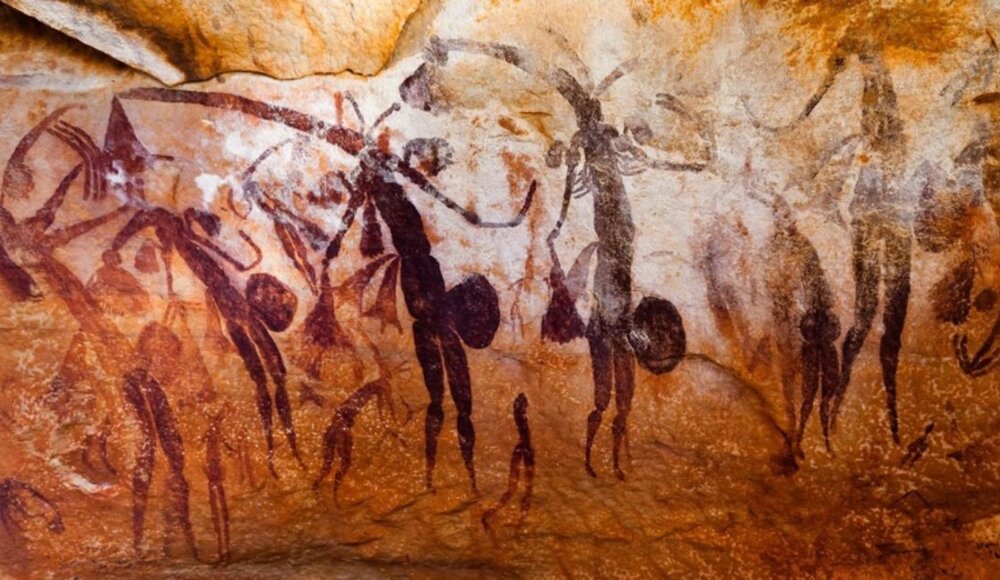The first Aboriginal rock paintings date back to the dawn of time (more than 50,000 years ago), much earlier than those found in Europe. First forms of known art, perpetuated on their original support (rock, sand ...) until twenty years ago then with modern techniques (canvas, acrylic ...), are now threatened with extinction.
Aboriginal art is both a sacred art and a ritual art used in initiation ceremonies. These representations evoke the Dream Time, the time of supernatural beings that have arisen from the earth, traveled and created the world and living beings. The space sacred time, space parallel to ours always pre-exists. Only initiates can come into contact with him during ritual ceremonies.

At the time of the creation of the world, these fantastic beings left traces in the landscape. The paintings are a kind of narrative and symbolic cartography which revive their work of creation of the world. By linking the two worlds, activating and diffusing the vital energy of the great ancestors, they allow life to perpetuate itself and the world not to disappear. Basically, the great Aboriginal artists are painting to ensure the survival of their community and more broadly of the world! Aboriginal art is a collective spiritual art with a naturalistic, figurative or geometric style.
The "aboriginal artistic movement" itself was born in the 1970s under the impetus of an English teacher Geoffrey Bardon who pushed the students of the community of Papunya (center of Australia) to reproduce on walls, panels or canvas the motifs of the Dream Time. According to the critic Robert Hughes, the last great pictorial artistic movement of the XXth century was born ... The sacred representations bearing power and history being reserved for the initiated, different techniques (such as pointillism) were used by the artists to preserve their secret character and show only the secular part. Success was such that Aboriginal art sales peaked at $ 200 million per year in the years 1990-2000. After having been ignored for a long time, this commercial success made it possible for the aboriginal communities to reconstitute themselves and to disseminate their millenary culture to the world in a suitable form.
Considered to be the legacy of an endangered civilization, this art was categorized by the art market as "ancient, ethnographic art", and progressively confined to stereotypes, techniques and standardized motifs giving the lead to "historical" artists and leaving little room for a more contemporary creation. Few merchants supporting young artists, the great initiates who bear the millennial pictorial tradition disappearing without transmitting their art, the vitality and the renewal of aboriginal art is seriously in danger. All the more the aboriginal communities, struggling for lack of means to assume both a role of social and artistic support, are threatened with regrouping near major cities by the regional governments.

Ancient rock art is also in danger, threatened by urban development, mining, erosion, and vandalism. 50% of the rock art could disappear within forty years if not soon protected. The support of some international museums such as the Musée du Quai Branly can not replace that of local authorities, which are struggling to recognize, preserve and support the identity, culture and art of the natives of the terra nullus "(a land which belongs to no one" according to the 1770 declaration of James Cook, one of the discoverers of Australia), yet an essential component of Australian identity.
Beyond this, without mobilization, what constitutes the heritage of mankind could eventually be reduced to a digital database of missing petroglyphs and paintings produced for the layman, truncated with their original sacred motifs, which would sign the end of Australian Aboriginal art.
Article proposed by:



 Nicolas Sarazin
Nicolas Sarazin